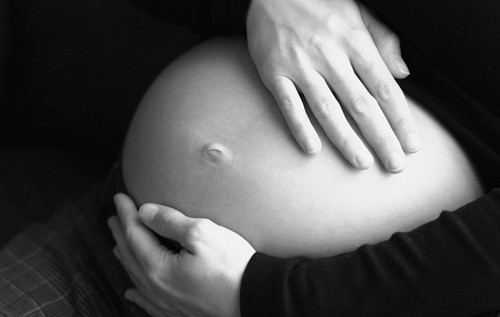Slips for newborns – the first baby clothes. It is impossible to do without them, so future and newly made mothers should learn more about this subject of children’s wardrobe.
What does a slip for a newborn look like? This is a jumpsuit that combines sliders and a baby’s undershirt, in which the baby is easy to move.
Such clothes are designed for everyday wear and sleep. Allocate models for cold and hot weather.
Summer
Summer baby slips for newborns are sewn from various types of knitwear, based on natural 100% cotton or flax fiber. Lightweight fabrics allow air to pass through, absorb moisture and do not irritate delicate skin. For the summer, the child will also need a body – shortened slip-on models without legs and with short sleeves.
Winter
For winter, warmer slips are needed. They can be flannelette, velor, fleece, both made entirely of these materials, and lined with cotton. Sometimes between the layers there is a heater – synthetic winterizer or holofiber.
Overalls thus warmed are used as outerwear. Often, a fleece or velor slip for newborns has a hood.
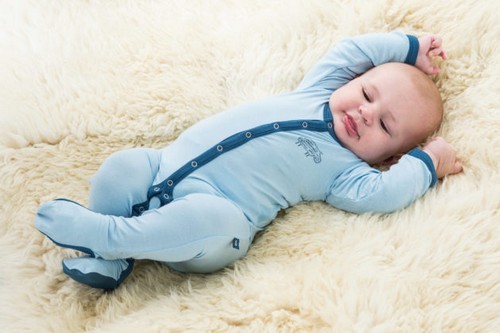
Types of Clasps
The convenience of its use depends on the location of the fasteners on the jumpsuit. Therefore, this criterion often becomes crucial when choosing a model.
On the buttons
Buttons are the most convenient and universal type of fasteners. They do not injure the baby’s skin, are easy to use, allow you to change the diaper without undressing the baby completely.
There are several types of button layouts:
- In the center and on both legs. This option is optimal for babies from birth to 3 months, when you have to change the diaper often, and the baby is not too active. Hygienic procedures can be carried out without even waking the crumbs.
- From the neck to the foot of one of the legs. Similar to the previous model, but more suitable for children older than 3 months.
- Near the neck and along the inner line of the legs. This option is recognized by most mothers as uncomfortable for newborns, it is difficult to put on a child who is not yet sitting.
- On the back and the pope. Not the best model for a baby younger than 6 months. Such slips are convenient when the crumbs begin to be planted on the pot.
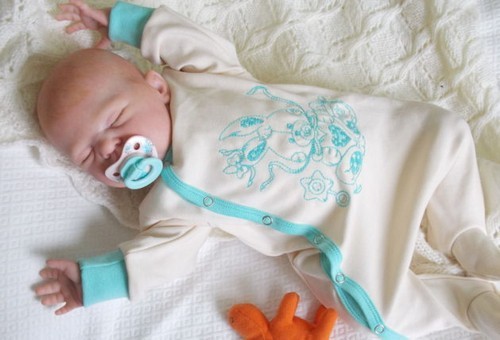
With ties
As a rule, the ties on such overalls are on the side. These slips are suitable only for the smallest, but, even in this case, their practicality is doubtful. Changing clothes in a hurry, you can tighten the ties too weakly or too much, which will create inconvenience for mom and baby.
Lightning
Zippers usually lead from the neck to one of the legs or extend through the center and inside of the legs. Their advantages are quick fastening and reliability (they cannot be unfastened during active movements of the child).
But, changing diapers, the slip will have to be unfastened and removed completely. In the first months of life, this should be done quite often. Therefore, a slip for a newborn with a zipper is impractical, and its advantages do not matter for a baby who has not learned to crawl and spin.
With hooks
Models with hooks are quite rare. They are comfortable and quite safe, but require more time to fasten.
It is believed that a slip for a newborn to discharge with such a fastener is the best solution, since it allows you to wear your baby very carefully. For older children and active crumbs, the model is not suitable, since the hooks can be unfastened when moving.
On the buttons
Buttons on high-quality children’s clothing guarantee a more secure fit than buttons. But fastening takes a lot of time, so mothers rarely choose these models.
Such a jumpsuit-slip for newborns, as well as the option with a zipper, is optional. For the inactive in the early days of the baby, there is no need for it.
Styles
In addition to the fasteners and the material of manufacture, there is another important criterion – the style of the slip. On this basis, they are divided into the following categories:
- Slip-on socks. Models are convenient for newborns, and with the growth of a child, socks can be removed and continued to wear.
- Slips for newborns with closed arms and legs. These overalls are great for kids, protect them from scratches and slipping socks. But, as practice shows, children from them quickly grow up.
- Slips with rubber bands or the usual edge on the legs and handles. The best option for thrifty moms. The overalls can be used for a long time, even when it becomes a little short. Of course, it will require separate socks.
- Body slips. These are excluding panties. Sleeves in them can be long or short. The bodysuit is comfortable for summer, and in cool weather they can be worn with sliders.
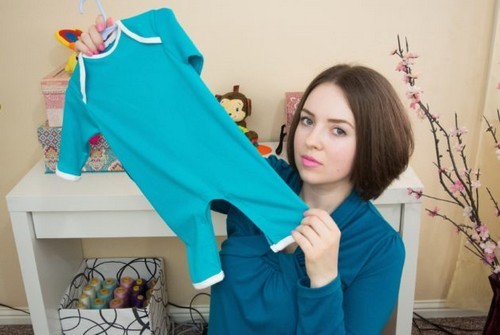
Advantages and disadvantages
Why are bodysuits and slips for babies better than sets of vests and sliders? The main advantages include:
- Comfort for the baby. Body and slips do not slip and do not gather in folds when the child moves, which means that he is reliably protected from the cold. In addition, they do not have a gum on the belt, so the baby’s tummy is not squeezed.
- Convenience for mom. With a slip, it is very simple to replace a baby diaper without removing all the clothes from it, fastening buttons or zippers takes less time than pulling on pants and a blouse.
- Large selection of models for different occasions and age. Slips are equally comfortable for sleeping and waking. You can choose options that are comfortable to put on while lying, sitting and standing.
The disadvantages of this type of clothing can only be associated with unsuitable fasteners for a particular situation. Moms note that slips worn over the head like a t-shirt are not very comfortable, especially for newborns.
Selection rules
The range of slips is impressive. But how to choose a really comfortable and high-quality?
Pay attention to the following points:
- The size. When choosing clothes for a newborn, you need to focus on his weight and height. The slip should not be close to each other, as children grow very quickly. But you shouldn’t take it much for growth, the baby will be uncomfortable in it. The best option is one size larger than the crumbs at the moment.
- Model. If you want the child to have time to wear new clothes longer, choose slips with elastic bands on the legs and ordinary sleeves. Overalls with sliders, where the space in the foot area is closed, and scratches, will quickly lose relevance due to the active growth of the crumbs.
- Location of fasteners. For a baby, it is better if they are in front and between the legs.
- Matching the season. For the summer, a natural cotton slip for newborns is suitable, for winter, an additional insulated jumpsuit is needed. For spring-autumn, a bike or fleece slip is useful.
- The condition of the seams. They should be smooth, soft to the touch, not standing out from the rest of the fabric. External seams on the first children’s clothes are optional, modern overlocks without this make an almost imperceptible line.
- Practicality of fabric. Slips from breathing natural materials, better than muffled colors, so as not to overexcite the child, are suitable for everyday wear. The fabric should tolerate machine wash well, so saving on quality is not worth it.
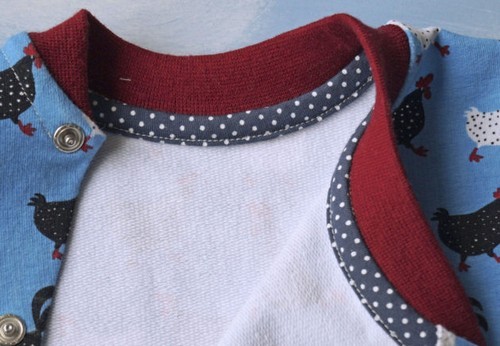
How to wear
Usually putting on a slip does not cause difficulties for mothers. Let’s see how to do it right with the example of the two most popular models for newborns.
If the clasp is located in the front center and on the inside of the legs, first you need to unfasten the slip and lay it on the changing table. The baby is laid on top of the clothes and, first, sleeves are put on him, and then legs are inserted into the legs. Now it remains only to fasten the slip.
In models where the clasp extends in front on one side, the sequence is different. The slip is also laid out on a suitable horizontal surface, placed on top of the baby and the first is put on the trouser leg from the side without buttons, the same is done with the second leg and the other side. Then handles are pushed into the sleeves and the jumpsuit is fastened. Winter warm slips for newborns are put on not over the naked body, but over the lighter, cotton ones.
How many slips a child needs
Many expectant mothers can not resist shopping and get a whole mountain of children’s clothing. This raises the mood, but subsequently most of the things remain unclaimed. The kid just does not have time to put them on, growing out of clothes earlier.
So what set of slips for newborns is needed for the first time? If the issue of budget savings is relevant for you, take only the necessary minimum. These are 5-6 slips. Why so many? Two will be in the wash, 2-3 – will remain in reserve and one on the child. The list can be supplemented with an elegant slip for a newborn for discharge, selected in tone to the envelope. Read more about the things most necessary for a newborn →
How to sew a slip on your own
If you do not trust the quality of store products and know how to handle a sewing machine, you can sew overalls for the baby yourself. How to cut and sew a slip for a newborn with his own hands? To do this, you will need about 1 m of fabric, warm or knitted, and a sewing machine with or without a zigzag function, but then an overlock is additionally needed.
Any suitable pattern is transferred to the material. As an example, the following is a pattern of a slip for a newborn with closed toes and button fasteners.
To determine the exact dimensions of the parts, before stitching the slip, you need to take measurements from the baby. Seam allowances are usually made at the rate of 0.5 cm on each side, plus another 2 cm, so that the baby can move freely in overalls.
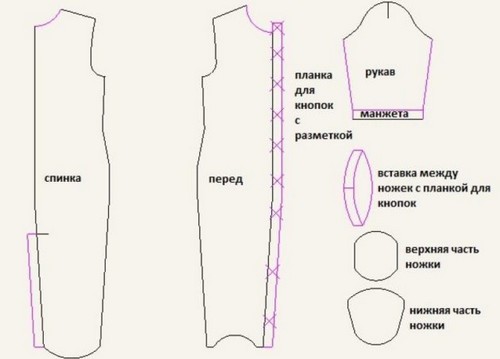
First, you cut out the back in direct and mirror reflection, then similarly transfer 2 front parts from paper to fabric (do not forget about the bar for the buttons). You will also need 2 parts of the sleeve, one insert between the legs and 2 upper and lower parts of the sock.
Sewing slips for newborns with their own hands begins with the implementation of shoulder seams, connecting the sleeves with the details of the front and back. Then we sew the parts on the sides, we fix the cut-out insert between the legs. Last we sew socks and connect them to the legs.
At the end of the work, we fasten the buttons to the strap on the stomach and between the legs. The finished slip must be washed with baby powder and ironed.
If independent tailoring seems to you too difficult, you can always buy a set of suitable overalls. The average price for them starts at 300 rubles, which is quite affordable, even with a limited budget.
Whether you decide to sew the baby slips yourself or buy ready-made ones, the main thing is not to save on the quality of the material. The delicate skin of your baby deserves the best.

